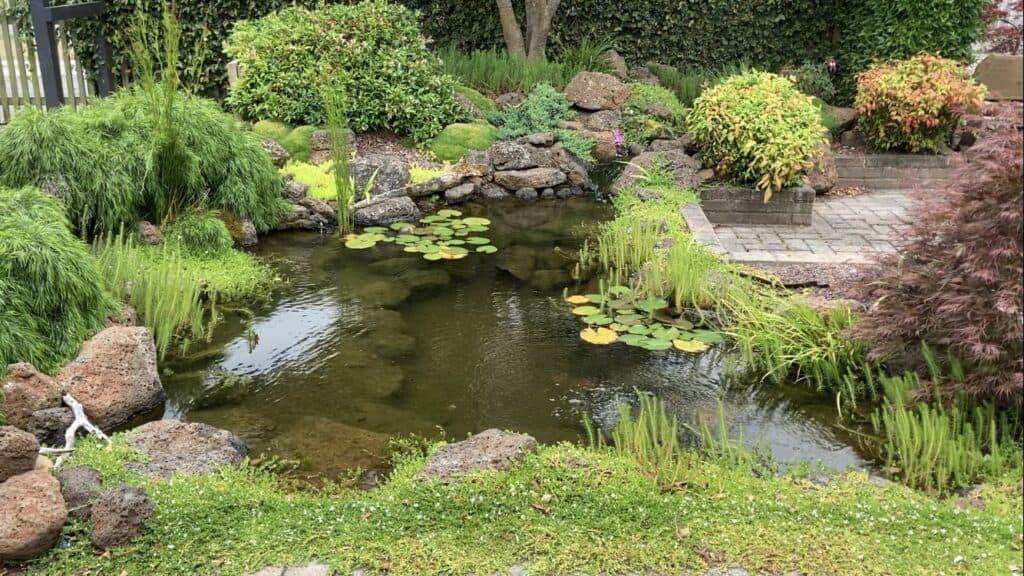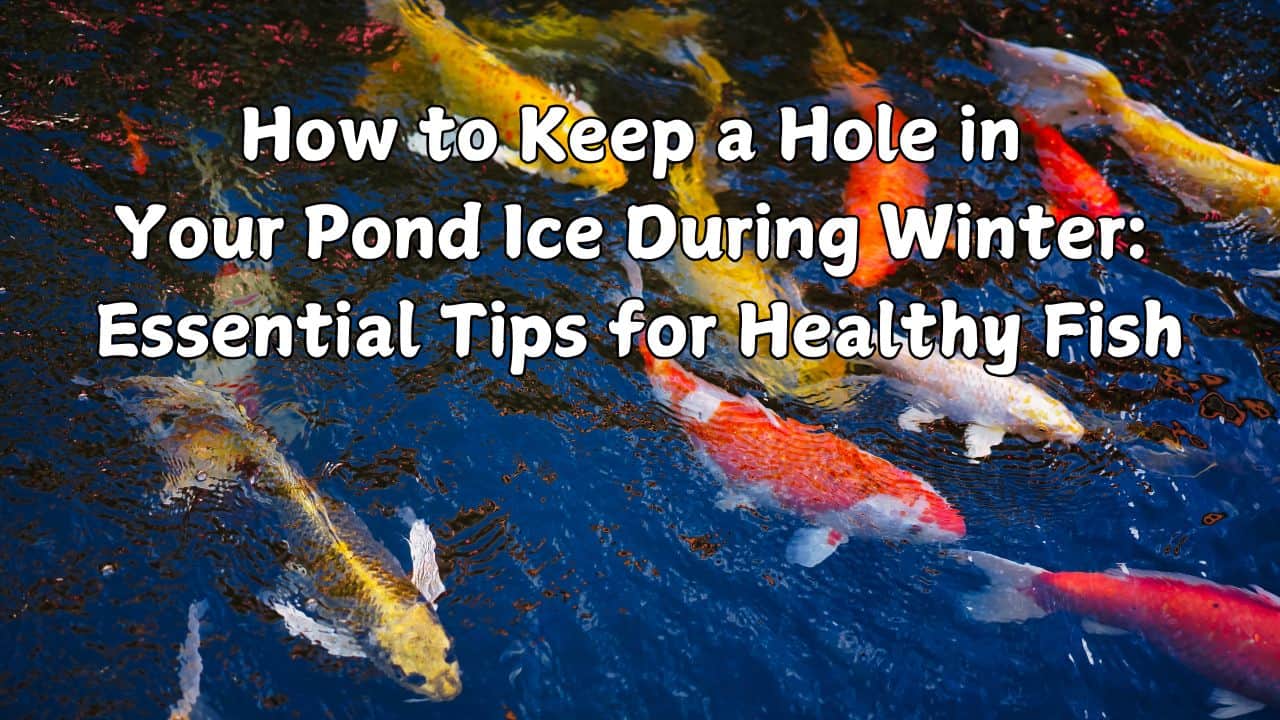Winter can be a challenging time for fish pond owners in colder climates. When temperatures drop, ice forms over the pond, creating a barrier between the pond’s surface and the air.
Fish need oxygen, and without a hole in the ice, harmful gases can accumulate, putting your fish at risk.
Let’s explore several effective methods to keep a hole open in the ice, along with tips on positioning and maintenance.
Why Keep a Hole in the Ice?
Maintaining an opening in your pond’s ice cover is essential for:
- Oxygen Exchange: Fish need oxygen year-round, even though they slow down in winter. An open hole allows gas exchange, keeping oxygen levels up.
- Preventing Toxic Gas Build-Up: A sealed ice cover traps gases like ammonia and carbon dioxide, which can harm or even kill fish if not released.
Methods for Keeping a Hole in the Ice
1. Aerators
Aerators are one of the simplest and most effective ways to keep a small area of the pond ice-free.
- How They Work: Aerators pump air through a diffuser placed at a shallow depth, creating bubbles that disturb the surface. This constant movement prevents ice formation in a localized area.
- Positioning: Place the diffuser around 6-12 inches below the surface but away from the deepest part of the pond. Placing it too deep may stir up warmer water, cooling the pond too much and stressing the fish.
- Maintenance Tips: Regularly check the diffuser to ensure it’s not blocked by debris, and keep the air pump sheltered from extreme cold to prevent freezing.
You can view aerators here. Aerators are also incredibly useful during warmer weather.
2. Pond Heaters (De-Icers)
A pond heater, or de-icer, is a device designed specifically for ponds to keep a small opening in the ice.
- How They Work: Pond heaters float on the water’s surface and use electricity to warm a small area, maintaining a hole in the ice.
- Positioning: Place the heater in a shallow section of the pond to avoid disturbing the deeper, warmer zones where fish tend to gather.
- Energy Efficiency: Look for energy-efficient models with thermostats that only activate when needed. This can help reduce energy costs and prevent overheating.
- Safety Tips: Make sure to follow the manufacturer’s guidelines, as some heaters can overheat if not used correctly or if exposed to low water levels.
There’s quite a few good options for pond de-icers on amazon.
3. Manual Ice Removal
For smaller ponds, manually removing ice can be an option if temperatures aren’t too extreme.
- How It Works: Use a bucket of warm water to gently melt the ice or a plastic mallet to tap and break it away (never use metal or hit the ice too hard, as this can create harmful vibrations for fish).
- Limitations: This method is time-intensive and only practical for milder winter climates or brief cold snaps.
Tips for Safe Winter Pond Maintenance
- Avoid Full Pond De-Icing: Your goal is to maintain a small hole, not to de-ice the entire pond, which could lower water temperatures significantly.
- Regular Checks: Inspect devices often to make sure everything’s functioning and that the hole remains open.
- Monitor Fish Health: Observe your fish on milder days to make sure they’re swimming normally and not gathering at the surface, which can be a sign of low oxygen levels. Do not feed them!
- Keep Debris Out: Remove dead leaves or organic matter before winter, as decomposition releases gases that may impact fish health.
A Few Additional Considerations
- Pond Depth Matters: The deeper your pond, the better it can sustain warmer water in its lower layers. Shallow ponds may require more frequent checks.
- Backup Power Options: Power outages can be problematic, so consider a battery backup or a generator for your aerator or heater if you live in an area prone to outages.
There’s plenty of options for backup power supply (amazon link) these days that are quite compact.
Final Thoughts
Using a combination of an aerator and a heater can provide extra peace of mind, especially during long freezes.
However, each pond is unique, so experiment to find the most efficient and cost-effective solution for your specific setup. By following these tips, you’ll help ensure that your fish stay safe and healthy through the winter season.
Thanks for reading!

Join my free email list
If you would like to join my free email list click the button below.
I promise I won’t spam you, I’ll only send information I think can help you save money building and maintaining a pond.

